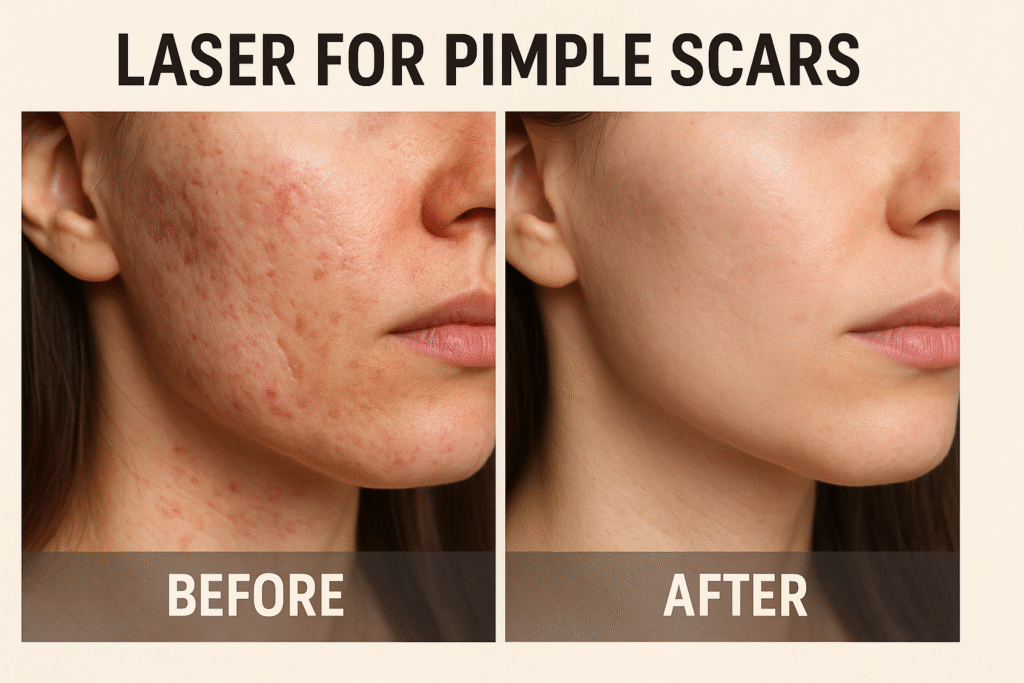
Laser Treatment for Pimple Scars: What You Need to Know
Expert insights, evidence-based approaches, and actionable tips for smoother skin
Introduction
Pimple scars, medically known as acne scars, affect millions of individuals and can significantly impact self-esteem and appearance. In the United States, acne scarring is a common cosmetic concern with many seeking effective treatments. Laser therapy has emerged as a leading solution, combining advanced technology with skin science to reduce scar visibility by stimulating skin renewal and collagen production. This article provides an evidence-based overview of laser treatments for pimple scars tailored to readers seeking trustworthy guidance.
How Laser Treatment Works for Pimple Scars
Laser treatments target the scar tissue on the skin’s surface, promoting the production of new, healthy skin cells to replace damaged tissue. There are primarily three types of laser treatments used for acne scars:
- Ablative lasers (e.g., CO2 lasers, Er:YAG lasers): These remove the top skin layer, revealing smoother skin beneath and stimulating collagen growth for lasting texture improvement. Recovery downtime varies from 3 to 10 days but offers the most significant improvement in deep or pitted scars.
- Non-ablative lasers (e.g., Pulsed Dye Lasers, fractional non-ablative lasers): These heat deeper skin layers without damaging the surface, encouraging gradual collagen remodeling with minimal downtime. Ideal for milder scars and hyperpigmentation.
- Fractional lasers (e.g., fractional CO2): These work by treating micro-areas of the skin at a time to stimulate collagen while sparing surrounding tissue, reducing recovery time and side effects.
The choice of laser depends on the scar type, skin tone, and patient preferences, with dermatologist guidance essential for a personalized plan.
Evidence-Based Guidelines & Dermatologist Insights
Multiple clinical studies and dermatologist reports confirm that laser treatments can achieve a 30% to 70% reduction in acne scar appearance after a series of sessions. Ablative CO2 lasers remain highly effective for deep scars but require a longer recovery, while non-ablative and fractional lasers provide safer options with less downtime.
Common side effects include temporary redness, swelling, and mild discomfort, which typically resolve within days to weeks. Careful patient selection and laser parameter adjustment are crucial to minimize risks like post-inflammatory hyperpigmentation, especially in darker skin types common in diverse populations like those in the US.
Dermatologists emphasize combining laser therapy with a proper skincare routine including sun protection to enhance results and prevent new scars.
Skincare Routine to Support Laser Scar Treatment
Maintaining an effective skincare regimen before and after laser treatment improves outcomes and skin health:
- Gentle cleansing: Use cleansers like CeraVe Acne Control Cleanser, formulated for acne-prone skin, to cleanse without irritation.
- Moisturizing: Keep skin hydrated with non-comedogenic moisturizers such as CeraVe PM Facial Moisturizing Lotion to support skin barrier repair.
- Sun protection: Daily use of broad-spectrum sunscreen guards against UV damage that can worsen scars and pigment changes.
- Targeted treatments: Incorporate ingredients like retinol and niacinamide (e.g., CeraVe Resurfacing Retinol Serum) to accelerate skin renewal and reduce discoloration.
Consult with your dermatologist to tailor your routine to your skin type and treatment plan.
Addressing Common Myths
Myth 1: Laser treatment completely removes all pimple scars.
Fact: Laser therapy significantly reduces scar appearance but does not entirely erase scars. Multiple sessions and complementary treatments may be needed.
Myth 2: Laser treatment is painful and unsafe for darker skin tones.
Fact: Advances in laser technology offer safe options tailored for various skin tones, including non-ablative and fractional lasers with minimal discomfort.
Myth 3: Moisturizing worsens acne-prone skin after laser treatment.
Fact: Proper moisturization supports healing and prevents excess oil production that might otherwise worsen acne.
Regional Considerations for United States Readers
The US features diverse climates ranging from humid to dry and temperate to extreme temperatures — all potentially impacting acne and scar healing. Increased UV exposure in many regions can exacerbate pigmentation issues post-laser treatment. Consulting a dermatologist knowledgeable about your region’s climate helps optimize laser timing and aftercare strategies. Additionally, skin types in the US vary broadly across ethnicities, requiring personalized laser parameter adjustments to maximize safety and efficacy.
Recommended Laser Treatments Available in the United States
- CO2 Laser Resurfacing: Best for deep, pitted scars with dramatic texture improvement, offered by many dermatology clinics nationwide.
- Lutronic Ultra™ (1927nm Thulium Laser): Ideal for early-stage scars and pigmentation issues, with minimal downtime.
- Fraxel Laser: Non-ablative fractional laser suitable for a variety of scar types and skin tones, well-established in the US market.
Frequently Asked Questions (FAQ)
Actionable Takeaways
- Laser treatment is a proven, effective option to markedly reduce pimple scars, especially when tailored to your skin type and scar characteristics.
- Consult a board-certified dermatologist to evaluate your scars, skin tone, and medical history to design a safe and effective treatment plan.
- Maintain a consistent skincare routine with gentle cleansing, moisturization, sun protection, and targeted serums to support laser outcomes.
- Manage expectations: while laser therapy improves scar appearance, complete removal is unlikely, and multiple sessions plus complementary treatments may be required.
- Be mindful of your local climate and skin reaction; follow your dermatologist’s advice on timing and aftercare to optimize healing.
Always prioritize professional advice and personalized care for best results and skin health.

